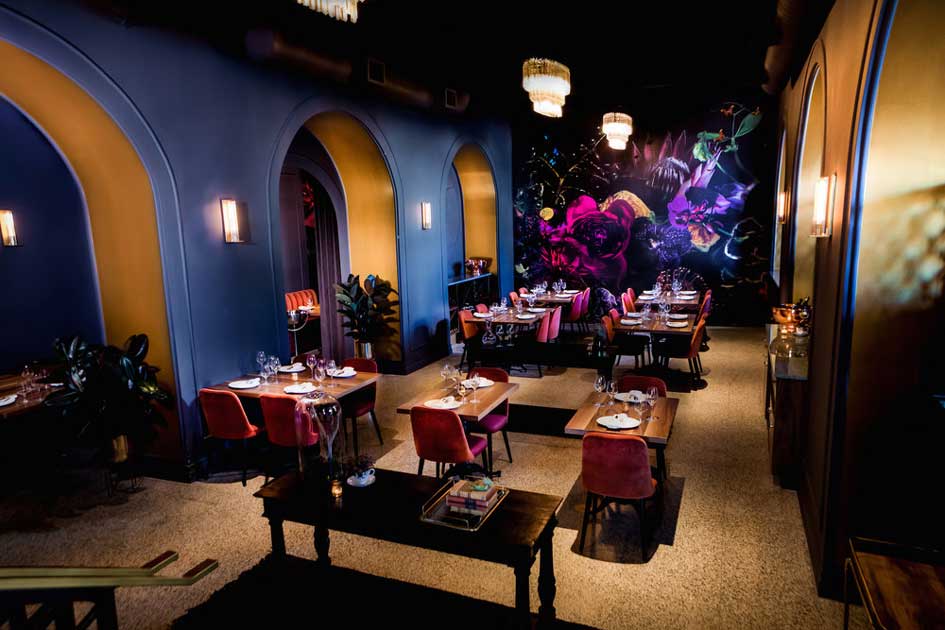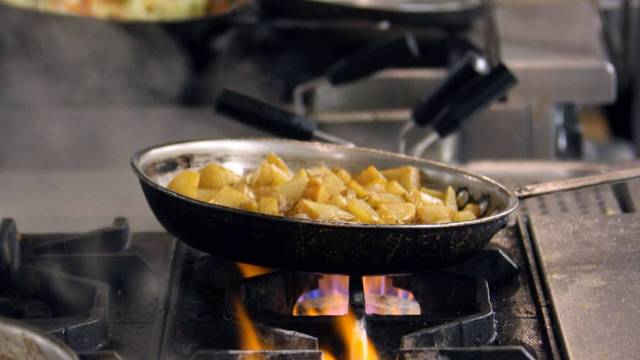Savor Authentic Eastern Cuisine With a Pan-Asian Twist for a Cooking Journey
Starting a cooking trip via authentic Asian food, enhanced with a Pan-Asian twist, offers a distinct possibility to discover the abundant tapestry of flavors that define the area's varied culinary practices. This experience invites you to savor the elegant balance of tastes-- sweet, salty, spicy, and sour-- harmonized by aromatic herbs and flavors. Envision the innovative blend of Thai curry and ramen or the unexpected delight of sushi burritos. As you ponder these enticing dishes, think about the cultural stories and historic impacts that form them, each bite providing a story waiting to be uncovered.

Exploring Pan-Asian Flavors
In the world of worldwide gastronomy, Pan-Asian cuisine stands apart for its amazing variety and the harmonious interaction of tastes from numerous Eastern societies. This culinary approach commemorates the special ingredients and rich traditions found across the continent, producing a tapestry of preferences that is both fascinating and rewarding. Secret to Pan-Asian food is its capacity to stabilize different tastes-- sweet, salty, spicy, and sour-- while highlighting the quality and top quality of each active ingredient.
From the umami-rich soy sauce of Japan to the intense chili peppers of Thailand, Pan-Asian cuisine offers an extensive combination of tastes. These components are commonly combined in innovative means, boosting dishes with layers of complexity. For example, the use of aromatic natural herbs such as lemongrass and cilantro, common in Vietnamese and Thai cuisine, includes a revitalizing brightness to recipes, while the incorporation of coconut milk delivers a creamy, rich appearance.
The emphasis on fresh fruit and vegetables and aromatic flavors makes certain that each meal is not only a feast for the taste but likewise for the senses. Pan-Asian cuisine invites diners to begin on a cooking journey, checking out the huge and differed landscapes of Eastern gastronomy with every bite.
Blend Recipes to Attempt
While Pan-Asian food is celebrated for its traditional tastes, the contemporary culinary landscape is progressively welcoming fusion recipes that mix these traditional elements with impacts from other areas. This cutting-edge method not just honors the rich heritage of Eastern cookeries yet also presents unique taste experiences that appeal to modern tastes.
A prime example of such a blend dish is the Korean-Mexican taco, where seasoned bulgogi beef is covered in a warm tortilla, topped with kimchi and a zesty gochujang-infused salsa. This combination marries the vibrant, mouthwatering flavors of Korea with the lively, fresh components of Mexican cuisine. In a similar way, sushi burritos have gained popularity, joining together the fragile creativity of Japanese sushi with the passionate, hand-held convenience of a burrito, commonly including blend components like tempura shrimp and avocado with a drizzle of wasabi mayo.
One more significant recipe is Thai curry ramen, which infuses the luscious, fragrant spices of Thai curry into the soothing brew of traditional Japanese ramen, producing a harmonious blend that tantalizes the detects. These combination meals extend beyond mere uniqueness; they represent a cooking dialogue between cultures, motivating expedition and advancement worldwide of Pan-Asian cuisine.
Necessary Active Ingredients and Spices
To absolutely value Pan-Asian food, one need to comprehend the necessary ingredients and flavors that create its foundation. This varied culinary design draws from an abundant tapestry of Asian customs, utilizing a harmonious mix of tastes and textures.
Aromatic elements are crucial, with lemongrass, ginger, and garlic being common across different Pan-Asian recipes. These components provide a fragrant base that improves the intricacy of flavors. Flavors such as celebrity anise, cardamom, and cinnamon introduce heat and personality, resembling impacts from regions like China and India.

Cooking Techniques and Tips
Grasping the art of Pan-Asian food calls for knowledge with its distinct food preparation methods, each adding to the lively tapestry of tastes this culinary tradition is celebrated for. Central to these methods is the stir-fry, a fast food preparation strategy that maintains the dietary honesty and dazzling shades of ingredients. you could check here Using a wok, the stir-fry method enables even heat circulation, crucial for accomplishing the particular texture and taste balance of Pan-Asian dishes.
One more essential method is steaming, especially common in Chinese food. This mild approach keeps the all-natural tastes and nutrients of ingredients, making it perfect for seafood and veggies. Dumplings, a precious staple, often take advantage of steaming, leading to soft, succulent structures.
Grilling, also important, imparts great smoky midsts to meals such as Oriental bulgogi or Japanese yakitori (Fine dining experience Islamabad). This strategy frequently entails marinating ingredients, enabling tastes to penetrate deeply prior to food preparation over an open fire or warmer
Lastly, understanding the art of stabilizing flavors-- wonderful, sour, salty, bitter, and umami-- is essential. Appropriately layering these elements can boost a recipe from regular to remarkable, offering a facility and satisfying culinary experience that embodies the essence of Pan-Asian food.
Eating Experiences Worldwide
Around the world, Pan-Asian cuisine supplies an exceptional dining experience, commemorated for its abundant tapestry of flavors and lively discussions. This cooking phenomenon has actually gone beyond social limits, capturing the hearts and tastes buds of food fanatics worldwide. In cosmopolitan cities like New York, London, and Sydney, Pan-Asian restaurants offer as melting pots where culinary customs from Thailand, This Site Japan, China, and beyond assemble, providing diners with a diverse mix of dishes that highlight the region's diversity.
The worldwide charm of Pan-Asian food exists in its capacity to provide both credibility and innovation. Chefs skillfully wed traditional components such as lemongrass, soy sauce, and miso with contemporary methods, leading to meals that are both familiar and refreshingly new. This fusion allows diners to begin on a cooking trip that respects heritage while welcoming modernity.
Moreover, dining experiences are raised with thoughtfully created environments that mirror the values of Pan-Asian visual appeals. From minimal Japanese-inspired interiors to vivid Thai-themed rooms, each dining establishment uses a distinct setting that matches the culinary offerings. Consequently, clients are not just eating a dish however partaking in a cultural experience, making Pan-Asian dining a really worldwide phenomenon.
Final Thought
The exploration of Pan-Asian food offers an extensive understanding of the detailed interplay of flavors and cooking customs throughout Asia. By welcoming fusion recipes such as Thai curry ramen and sushi burritos, the cooking journey not just highlights the versatility of standard components however also showcases innovative contemporary techniques. This gastronomic adventure, enriched by cooking techniques and necessary flavors, supplies a peking house distinct opportunity to appreciate the multiculturalism and culinary artistry that specify Pan-Asian cuisine on an international scale.
Getting started on a cooking trip via genuine Eastern cuisine, improved with a Pan-Asian twist, uses a distinct possibility to check out the rich tapestry of flavors that specify the area's diverse cooking traditions.In the world of international gastronomy, Pan-Asian cuisine stands out for its remarkable diversity and the harmonious interplay of tastes from various Asian societies. Secret to Pan-Asian food is its capacity to balance different tastes-- sweet, salty, spicy, and sour-- while highlighting the quality and quality of each active ingredient.
